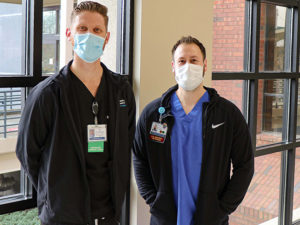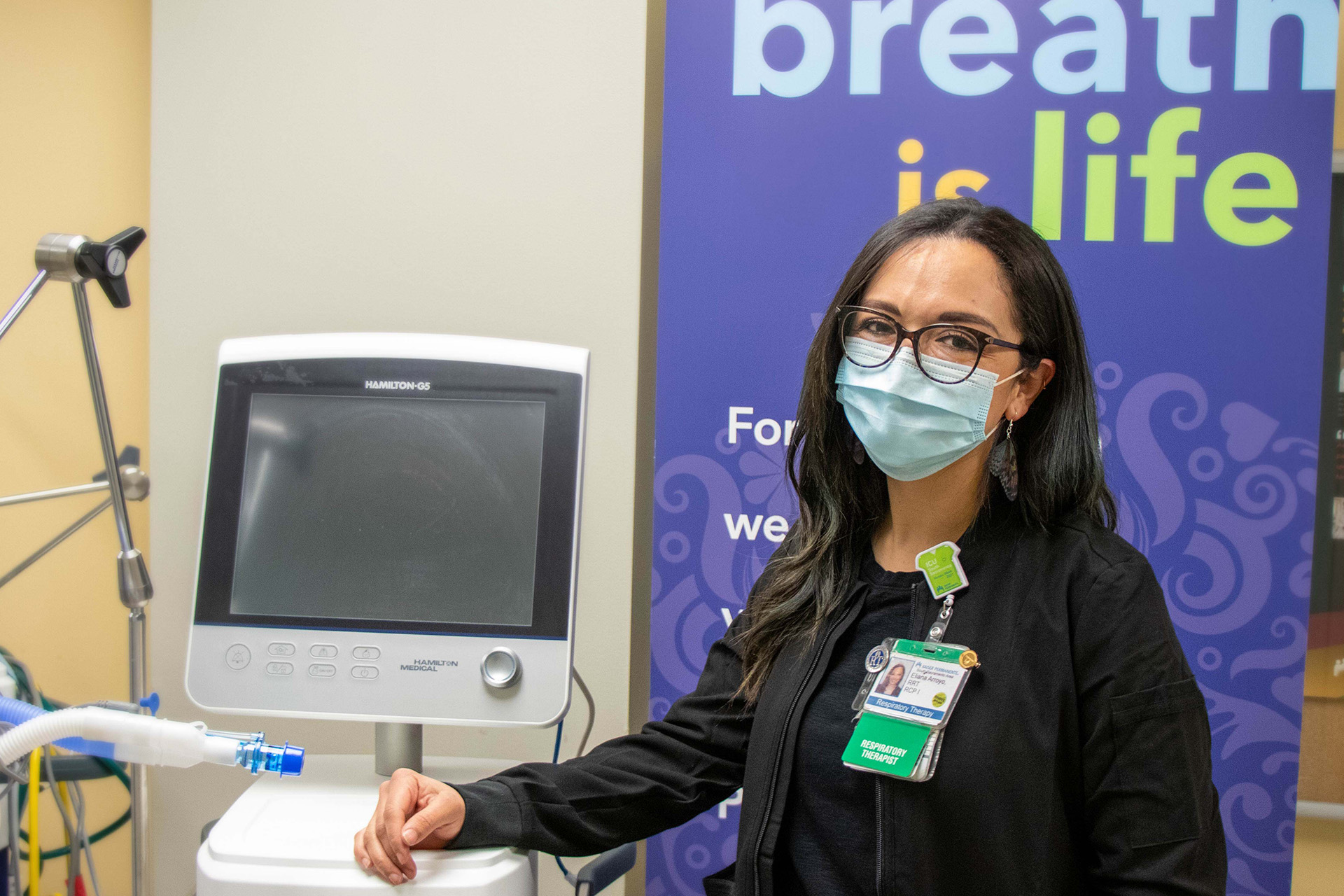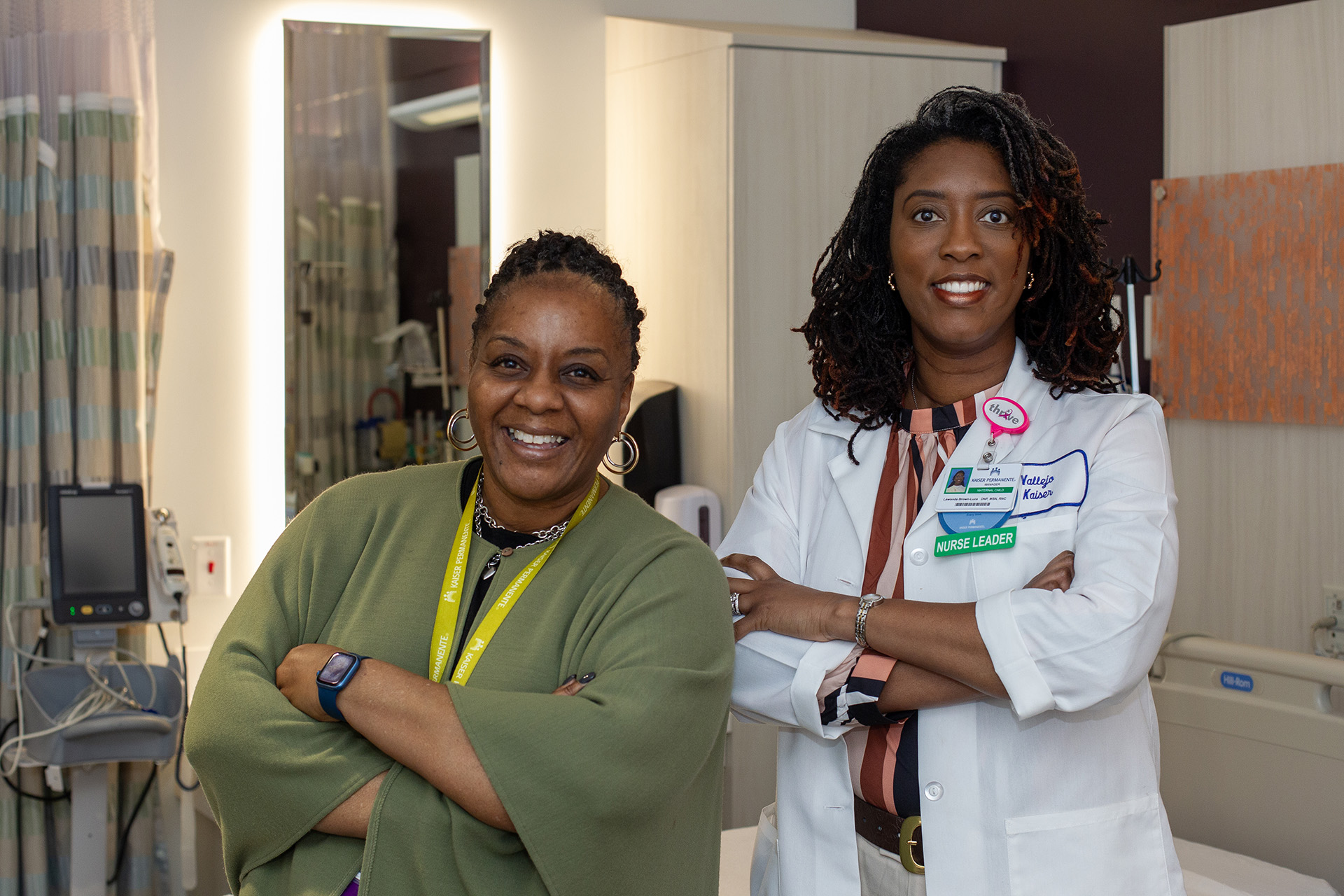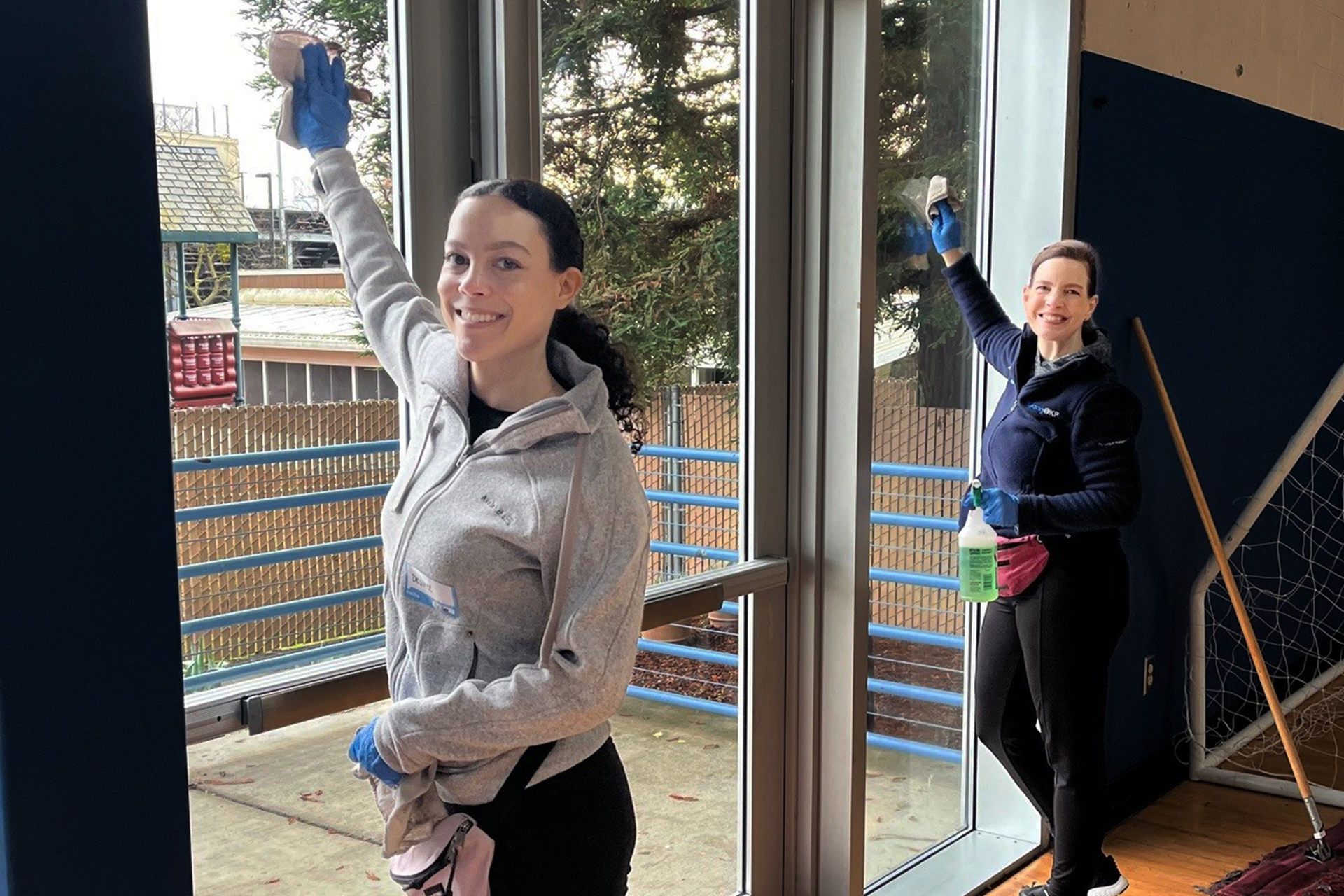If there’s one thing respiratory therapist Eliana Arroyo and her colleagues have learned in caring for COVID-19 patients over the last 2 years, it’s that there is so much more to learn.
“I don’t think I’ve seen anything more difficult than COVID-19,” said Arroyo, 35, a respiratory therapist for the last 5 years at the Kaiser Permanente South Sacramento Medical Center.
The department where she works, led by Pulmonary Clinical Services Manager Michael Levitt, recently was named the best in Northern California by the California Society for Respiratory Care for its dedication to patients in the hospital, Emergency Department, and outpatient settings and for establishing an online system of setting and tracking department goals.
During the course of the pandemic, Arroyo said she has learned to prepare herself for the worst when making human connections with patients.
“When patients are in the intensive care unit, they are very aware of what is happening to them,” Arroyo said. “When we have to put them on a ventilator, I tell them ‘you can hold my hand,’ because they know they might not wake up. I’ve been there multiple times. It’s just heartbreaking. Sometimes you have to protect yourself emotionally, because you know the patient in the next room may be intubated next.”
The pandemic has been an emotional and physical rollercoaster for all health care providers. Clinicians at the South Sacramento Medical Center are proud they have treated and successfully discharged 2,507 COVID-19 patients. At the same time, Sacramento County has the highest number of COVID-19 deaths in Northern California, currently at 2,448, according to the California Department of Public Health.
The toll taken
Arroyo, Levitt, and Assistant Manager Brian Pierce all recently talked about their experiences treating patients with the disease and the toll it has taken on them over the last 2 years.
One of the biggest challenges facing respiratory therapists treating very sick COVID-19 patients is when to recommend a person should be sedated, intubated, and placed on ventilator, and when to take them off, they said.
Longstanding protocols of treating patients with lung issues just don’t apply to COVID-19 patients, who in addition to having lung problems, sometimes face a litany of other ills.

“With our non-COVID-19 pneumonia patients, we typically put them on a ventilator with good outcomes,” said Pierce, who has worked at Kaiser Permanente for 9 years. “But with COVID-19 pneumonia, we learned early on that it’s so different than what we were familiar with. Their lungs become stiff and inflexible, and their chances of surviving on a ventilator are poor. That has been a tough learning curve.”
More in their toolkit
Respiratory therapists have learned that recommending other treatments can be effective, such as the use of high-flow oxygen through a small tube placed in the nose, positive airway pressure therapy, or CPAP, that does not require intubation, placing people on their stomachs or sides to open their airways, and sometimes, the use of nitric oxide therapy to help increase the oxygen levels in their blood, Arroyo said.
“We try to utilize other therapies as much as we can and hope they turn around, but if they get worse, we have to put them on the ventilator,” Pierce added.
Levitt said his team has excelled at better learning how to use many of the 240 or more patented modes of ventilation which include oxygen volumes and pressures that can be dialed in for any one patient.
“We have more in our toolkit since we’ve been using them so much,” Levitt said. “There are a couple of very complicated ventilator modes that we have taken the time to learn, and that has made us better clinicians.”
As long as it takes
Looking back over the last 2 years, Pierce said clinicians who directly treat COVID-19 patients are now more aware of which treatment procedures in the hospital are likely to cause disease-bearing droplets to become airborne, a process called aerosolization, and that has helped them more efficiently utilize protective equipment, so they are not also infected.
After all they have been through, Levitt said they are prepared to continue for as long as it takes, rather than counting on a resolution that will allow them to go back to what life was like before.
“We’ve seen the worst of the worst,” Levitt said. “But we are very proud of the fact that we have treated and successfully discharged so many patients. To us, the threat of the new variants is not concerning, because we are going to face this head on and keep fighting. That’s all we can do.”





This Post Has 3 Comments
I am so impressed with these wonderful clinicians, and their support staffs, who are so dedicated to their work and their patients. Bravo to them all!
Thank you so much for this! To have names and faces(tho masked)
attached is always more comforting.
We were not mentally prepared for all of this. However, knowing that you all are still researching and using new techniques is wonderful news.
Again, Thank You⚘
We appreciate the care received by all COVID related care. Thanks from a forty year Kaiser employee who currently has Level 4 Mesotheloma …😁